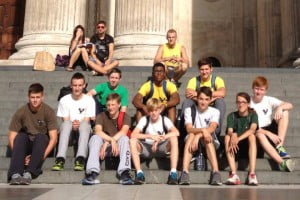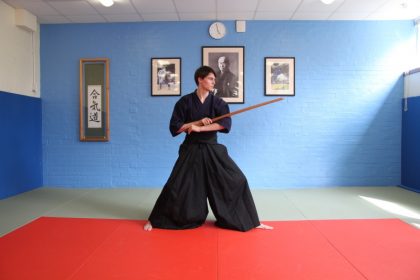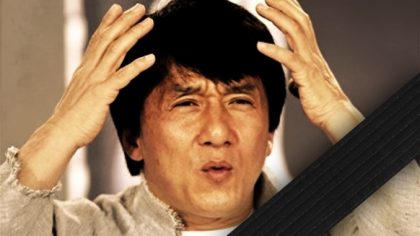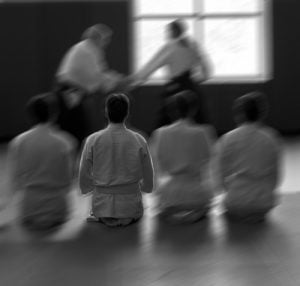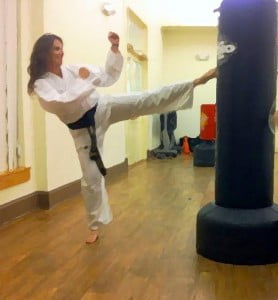Pressure points (PP) or acupressure points are known by many different names throughout the world, and are predominantly utilised in Chinese medicine and the Five Elements theory (Wu Xing). The Five Elements theory is the concept that each area of the body relates to one of the five elements, these are; Fire, Metal, Wood, Water and Earth, this knowledge can then be applied to healing, holistic and combat. In relation to Japanese combat systems, whether it be Karate, Jujutsu, Daito Ryu, Ninjitsu or Ninpo the pressure points are known as Tenketsu.
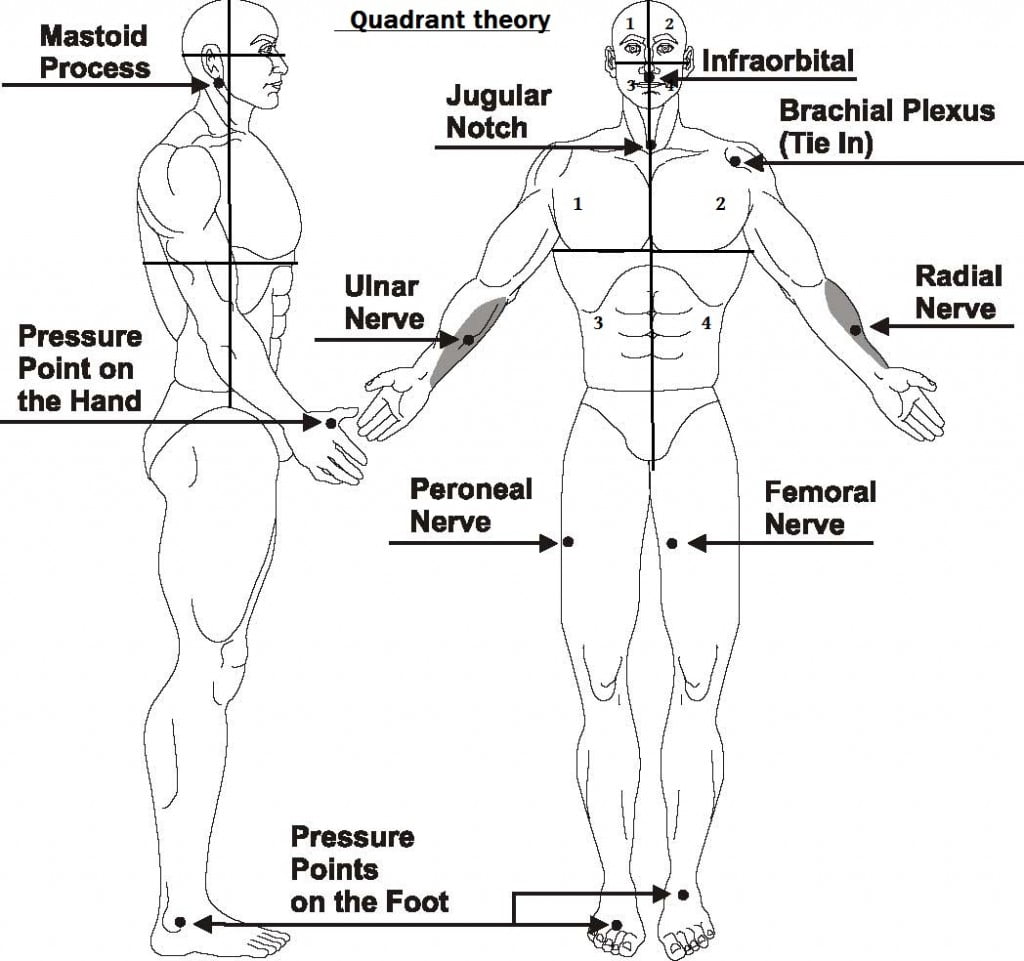
These points alter the flow of Chi/Qi/blood by applying pressure to certain points with the right amount of force to affect a reaction; this could be anything from numbness, slowing of the heart rate, unconsciousness or death. These areas are also commonly known as meridians, of which there are 20; the points relating to the internal organs, of which there are 12, are known as primary meridians, which also have their own sub-meridians. These meridians are bilateral; the remaining 8 are sometimes known as extraordinary meridians and are also bilateral beside 3 that run around the centre of the body near the waist. Training to utilise these highly effective and possibly devastating pressure points (nerve clusters) can take many years of study, research and practice. Certain points are more difficult to practice with a training partner as they can be dangerous if applied incorrectly, meaning that the higher knowledge level practitioners often never use them in training or in real life combat.
I would highly recommend to any martial arts practitioner to look into the use and application of Tenketsu. There are over 300 different points spread throughout the body, a large number of them can cause pain, paralysis or death. The points relating to the different areas of the body are not where most would expect them to be; for example, most of the internal organ points are in the arms, shoulders, throat and face. So, for self-defence application these points can be used to give the defender an advantage over their opponent, whether they be a muscle bound thug or an average size assailant.
Now, I can’t list all 300+ Tenketsu and their locations (as it would be pages long) but I will give examples of them all. They are the Spleen, Heart, Small Intestine, Large Intestine, Bladder, Kidney, Pericardium, Triple burner, Gallbladder, Liver, Lung, Stomach and then the Governing vessel and Conception vessel. You’ve probably thought thats only 14 where are the others, well the truth of it is, they have never been properly classified so don’t have applied names, but they are also found throughout the head, limbs and torso.
Pressure point use can be a very effective tool in your self-protection and combat arsenal. Yet there are other elements to making pressure points work for you, a solid knowledge of the basic biology of the human body is a great place to start. Knowing where everything is even the hidden parts, internal organs, muscle connectors, bone release points and the meridians are paramount to pressure point use and generally honed combat skills. Knowing where to cut down the tree makes a lumberjacks job far easier then flailing blindly with an axe, the same can be said for combat; eliminate your opponent’s weaknesses and you have eliminated their will to fight.
I have many people ask me, as I have asked my PP instructor in the past: “Do pressure points work on everyone, no matter their size, strength or body type?”. Well, the correct usage of pressure points, especially when amplifying joint locks and hand strikes, will put 99.9% of people down. There are a number of people who have what’s known as sunken Meridians and others with high pain thresholds, thicker ligaments and tendons. Years of training and experiencing joint locks, impacts and falls will strengthen the body’s resilience to pain without doubt; some people are born with slightly more tolerance than others. That of course isn’t to say these people are invulnerable and unbeatable should you ever have the misfortune of getting in an altercation with one.
Martial arts is about adaptation, tactical movement, deception and explosive response. Ninja would rely of the element of stealth, surprise, deception and rapid dominance to win out over perhaps much physically stronger or more experienced fighters. The techniques of Ninpo are often very acrobatic, similar as many of you will know to modern Parkour. Hence, the body-type of most Jōnin are slim but strong. Samurai, often being the opposite, are larger built and better fed, yet still dangerous if skilled.
But I digress, if you find a technique isn’t very effective against an opponent or even when training in the dojo, it’ll either be because it’s not being done correctly or that person just isn’t affected by it. So, you alter your mode of combat, find something that is effective and works for you. Every Martial artist has area’s where they are more proficient or have a natural aptitude for, the key is to strengthen your weaknesses. Become as faultless as you possibly can. One of my favourite quotes “If you always put limit on everything you do, physical or anything else. It will spread into your work and into your life. There are no limits. There are only plateaus, and you must not stay there, you must go beyond them” – Bruce Lee. No matter how many hours you train in a nice comfy dojo with matted floors, if you cannot think quickly and respond even faster, then the training is only for show.
Those soft padded floors aren’t there when you are in a real life scenario; most likely its hard unforgiving concrete floor. All these things must be considered when training Tenketsu. For those aspiring Ninja out there to supplement your Tenketsu training you should explore and study the following Ninpo elements; Karumijutsu- the body lightening art, Hichojutsu- the leaping and flying art and also explore and research the style of Hiden No Togakure Ryu Ninpo.
Within our system we offer courses in Pressure points, power generation, Pressure point knock outs and Acupressure for healing. We have a large group of technique amplifiers we call players to the game, these amplifiers which include PPs work together to make techniques easier, more effective and less energy consuming.
Though the combination of these amplifiers activate the effectiveness of the PP, knowing how to activate the fire and metal points in the hand and arm make a huge difference when trying to apply a centre lock or arm bar, for example. The best advice I can give when it comes to the study of pressure points and meridians is, opposites hate each other. The front of the body hates the back of the body, the front of you head hates the back of your head, your left pectoral/breast hates the lower right side of your abdomen and so on. So if I struck the left side of the chin whilst simultaneously striking the back of the head to the right, the reaction is far greater.
For reference if we cut the body into Quadrants(Q), say the torso is cut into four parts (refer to the illustration above). We then number them the upper right is number Q1, the upper left is Q2, the lower right is Q3 and the lower left of the torso is Q4. Now if I strike anywhere within Q1 and also anywhere in area Q4 the reaction is far more devastating than if it was just one side or the other. The same can be done for a strike to Q1 then Q2, or Q2 then Q3. The smaller the quadrant the closer you will get to pressure point areas, as if the whole body has been cut into small chunks. The same can be done for all of the body, if when looking at your training partner you can envision them with lines drawn across each section of their body as if they’re being quartered then you have an idea of what I mean.
So in conclusion Pressure points are not always where you would expect to find them. There are other elements to your techniques that will hugely maximise the effectiveness of your pressure point application. Opposite parts of the body react well for you bad for your opponent when struck or manipulated correctly. The opposite effect can be practised and demonstrated easily, next time your with your training partner and you’ve got them in a joint lock, watch how the opposite side of the body moves away from the pain. Knowing your own body as well as any would be attackers is also a key piece to the overall self defence, combat and Martial arts experience. Thanks for taking the time to read this article, I hope it was enjoyed and enlightened people to the fascinating and amazing inner workings of the body.
Yours in the Martial Arts
J Edwards

